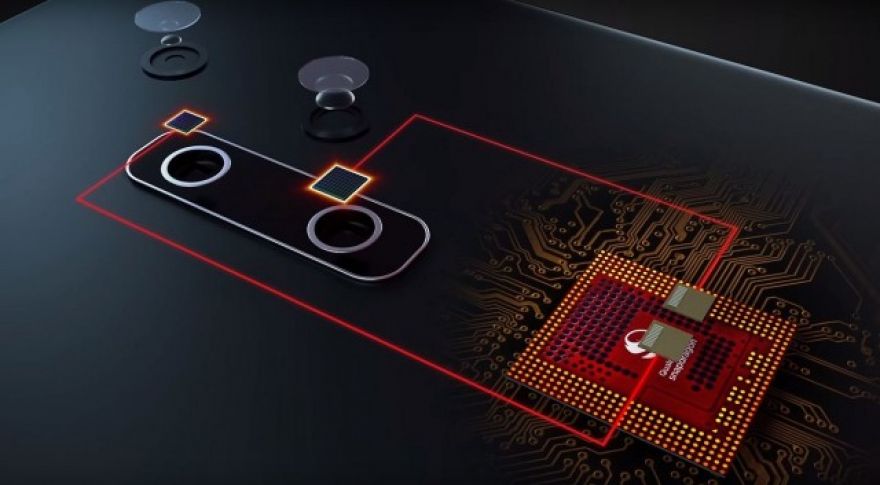
Qualcomm declares Snapdragon processors aren’t ‘processors’ at all
Qualcomm acknowledges that “processor” is an accepted and broadly used generic term for a wide range of products, including ASICs, CPUs, DSPs, GPUs, MICs, and probably at least a few others. It also admits that we already have a term to describe microprocessors that integrate a wide range of functionality, including Wi-Fi, I/O, cellular radios, cache, and memory controllers. We call that an SoC (System on Chip). Nevertheless, Qualcomm no longer feels that term is big enough, either. Its argument is :
The Qualcomm Snapdragon Mobile Platform takes our offerings beyond a single chip. While the single processor form factor is truly a system-on-a-chip (SoC), housing custom technology like an integrated modem, CPU, GPU, and DSP, there is a lot more going on outside of the chip that is designed to ultimately support a wide variety of devices.
Technologies from the RF Front End — without which your mobile device wouldn’t be able to acquire a signal, make a phone call, or surf the web — to Qualcomm Quick Charge, the Qualcomm Aqstic audio DAC, Wi-Fi (802.11ac and 11ad), touch controllers, and finger print technology, are all engineered to work together with the SoC to deliver a superior and smooth user experience.With the Snapdragon mobile platform we can now articulate the value that we provide to a device manufacturer — from developing algorithms for great pictures and videos, to making sure that the battery is long lasting. More importantly, the word “platform” will be used to explain the combined key user experiences — camera, connectivity, battery life, security, immersion — that these essential technologies are designed to deliver. And these experiences are not just for smartphones anymore, but are applicable across verticals such as automotive, IoT, and mobile PCs.
There’s some precedent for this kind of rebranding effort. When Nvidia launched its , it attempted to rebrand Tegra products as “” rather than the already-common “smartphone.” It was a blatant attempt to use marketing to position a device as to other smartphones on account of being labeled differently, as opposed to actually being better. It was also never clear how the branding was supposed to scale — if devices based on Tegra 2 are “super phones,” and devices based on, or are “super tablets,” powered by “super chips,” how did any of this help customers make decisions about which products to buy? I’d argue it didn’t.
The other example is from farther back in time. Intel launched its Centrino brand in 2003, as an ostensible way of promising end users they’d receive better battery life, better performance, and better wireless network connectivity than they would if they used a non-Centrino solution. Centrino-branded systems all required an Intel processor, chipset, and wireless solution.
But while there are historical parallels to the current situation, what Qualcomm seems to be going for is much more aggressive. It’s one thing to take CPU and graphics and declare these are essential to your product’s value offering. It’s another entirely to claim you’re changing your own brand conversation by including things like an RF Front End, Qualcomm’s Aqstic sound tech, touch controllers, or finger print technology. While I don’t want these components to suck, I also don’t spend much time worrying about whether my phone packs the latest version of Aqstic. Then the company goes further, claiming that by referencing a “platform,” they’re explaining key user experiences around cameras, connectivity, battery life, security, and whatever Qualcomm is referring to when it says “immersion.”
A solution to Qualcomm’s antitrust problem, long-term product scaling
I can only think of two good reasons for Qualcomm to make a redefinition like this. First, the company has come under heavy fire from regulators and around the world for its and patent royalty rates. Second, we’re reaching a point of diminishing marginal returns in smartphone performance. It’s not as easy as it once was to wave a hand and deliver 20-30% improved performance year-on-year.
Either way, by declaring Snapdragon a platform, Qualcomm can also claim to always have improved the product, even if the improvements themselves are marginal. After all, when you include things like software and your RF front end in the definition of your “platform,” then you’re rarely going to run out of ways to showcase your innovations to the public — and you don’t have to explain exactly how this Snapdragon is better or different than the old Snapdragon. Remember, the high-end products are all Snapdragon.
Come to think of it, this does remind me of another company — Microsoft, and its “Everything is Windows 10 always and forever now” position. It wasn’t great then, and it isn’t great now. Mostly it just confuses people. And with all due respect to Qualcomm, which makes great products and technology in general, it’s hard to see how this move is positive for anyone but the company’s legal and marketing teams. It’s not better engineering, and it’s not better for customers.